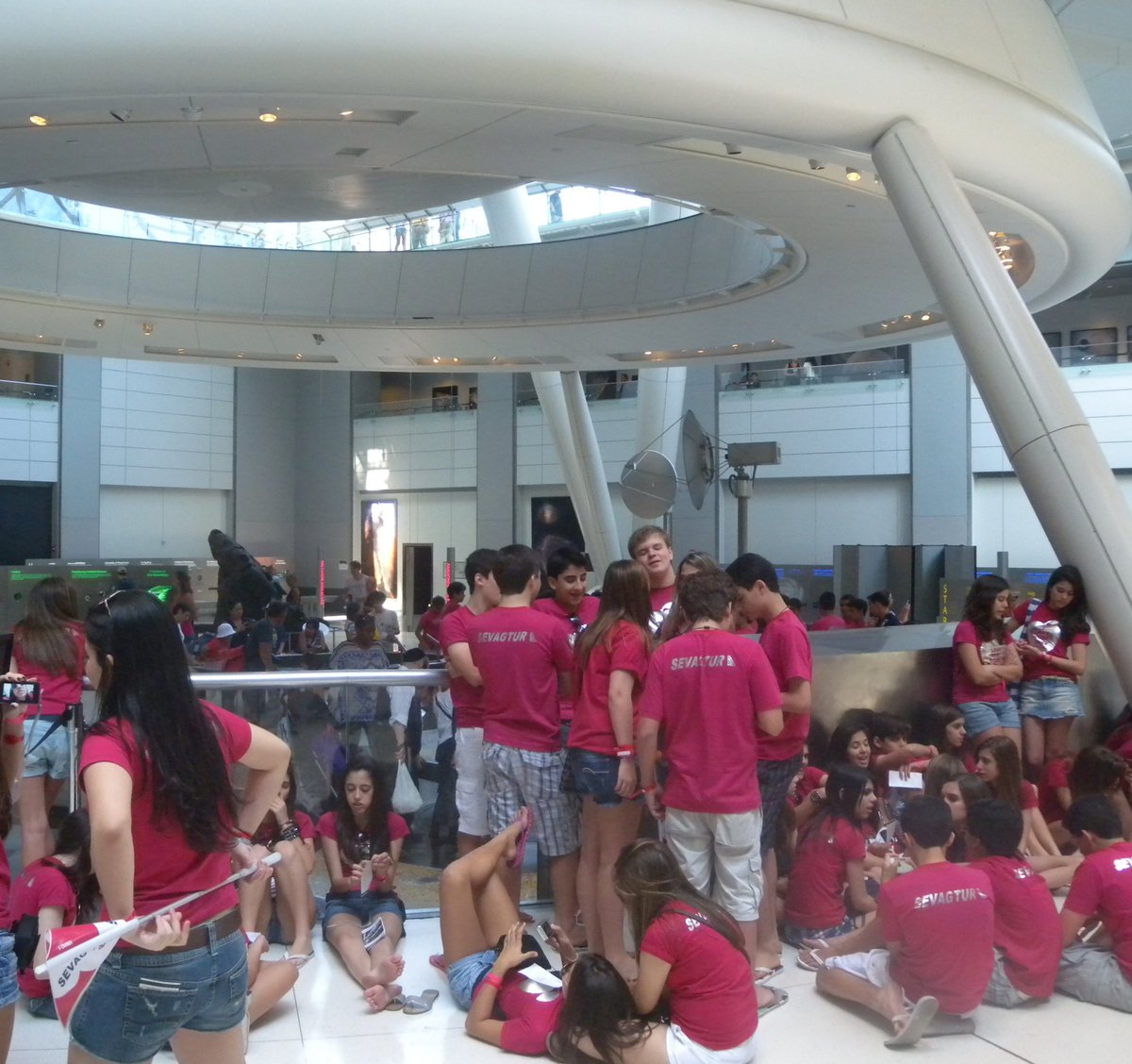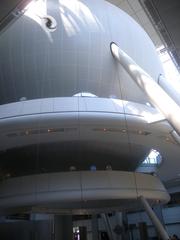
Hayden Planetarium Visiting Hours, Tickets, and New York City Historical Sites Guide
Date: 14/06/2025
Introduction: Hayden Planetarium’s History and Cultural Significance
Nestled within the renowned American Museum of Natural History (AMNH) on Manhattan’s Upper West Side, the Hayden Planetarium stands as a landmark of scientific exploration and public engagement. Since opening its doors in 1935, it has evolved from an Art Deco marvel into a state-of-the-art centerpiece within the Rose Center for Earth and Space. Today, the planetarium unites cutting-edge technology with immersive educational experiences, captivating millions of visitors each year and serving as a beacon for astronomy enthusiasts and curious minds alike (citylore.org; architectuul.com).
Table of Contents
- Historical Overview and Cultural Significance
- Rose Center for Earth and Space: Vision, Architecture, and Innovation
- Exploring the Hayden Planetarium: Attractions and Exhibits
- Practical Visiting Information
- Travel Tips
- Frequently Asked Questions (FAQ)
- Conclusion and Call to Action
- References
Historical Overview and Cultural Significance
Origins and Early Development (1930s–1950s)
The Hayden Planetarium was established in 1935, thanks to a New Deal loan and a substantial donation from Charles Hayden (citylore.org). Its original Art Deco building, designed by Trowbridge and Livingston, featured a copper-clad dome and housed a then-advanced Zeiss II projector capable of displaying night skies from both hemispheres. The planetarium quickly became a beloved fixture in New York, attracting nearly a million visitors in its first year and presenting popular theatrical shows that uplifted spirits during the Great Depression.
Wartime Contributions and Postwar Expansion
During World War II, the planetarium played a significant role in training military personnel in celestial navigation (citylore.org). Postwar, its exhibits expanded to include artifacts like the Willamette Meteorite and interactive displays such as animated orreries, further enriching the visitor experience (playingintheworldgame.com).
Architectural and Programmatic Evolution (1960s–1990s)
By the late 20th century, the planetarium underwent restorative efforts to preserve its Art Deco features, while also recognizing the need for modernization (citylore.org). Iconic programs like the “Stars of Christmas” became part of New York’s cultural landscape.
The Rose Center and the New Millennium
In 2000, the original structure was replaced by the Rose Center for Earth and Space after a $210 million renovation (citylore.org). Designed by James Polshek and Todd Schliemann, the new center features an 87-foot illuminated sphere suspended inside a vast glass cube—a striking architectural achievement and symbol of humanity’s cosmic ambitions (architectuul.com).
Neil deGrasse Tyson and the Modern Era
Appointed director in 1996, Neil deGrasse Tyson has elevated the planetarium’s profile globally, championing accessible science education and innovative programming (newyorker.com; biographyhost.com). Under his leadership, the Hayden Planetarium has become synonymous with cutting-edge astronomical storytelling (scientificamerican.com).
Rose Center for Earth and Space: Vision, Architecture, and Innovation
Vision and Design Philosophy
The Rose Center was conceived as a “cosmic cathedral,” with transparent architecture reflecting the openness of scientific inquiry (architectuul.com; ennead.com). The centerpiece is the Hayden Sphere, appearing to float within the mullionless glass cube—an engineering feat made possible by a tension-supported curtain wall system (thorntontomasetti.com).
Architectural Features
- Glass Cube: Six stories tall, nearly an acre in size, providing panoramic views and a luminous atmosphere.
- Hayden Sphere: An 87-foot orb housing the Space Theater (upper hemisphere) and the Big Bang Theater (lower hemisphere).
- Suspended Walkways: Spiral ramps and the Cosmic Pathway guide visitors through the history of the universe.
Structural and Technical Innovations
The Rose Center’s advanced engineering allows for uninterrupted views and dramatic nighttime illumination. Its projection systems are regularly updated to showcase the latest astronomical discoveries (ennead.com).
Awards and Recognition
The Rose Center has received numerous accolades, including the AIA National Honor Award for Architecture and Time Magazine’s Best in Design (thorntontomasetti.com).
Exploring the Hayden Planetarium: Attractions and Exhibits
Hayden Sphere and Space Theater
At the core of the planetarium experience, the Space Theater employs a Zeiss Mark IX star projector and advanced digital systems to create immersive journeys through the cosmos. Shows are developed in collaboration with top scientists and are grounded in real data from agencies like NASA, JAXA, and ESA (thewallace.com).
Recent Highlight: “Encounters in the Milky Way”
Narrated by Pedro Pascal, this recent show explores the Milky Way’s structure and the discovery of a new spiral formation within the Oort Cloud—an accidental yet significant scientific breakthrough made during the show’s production (apnews.com).
Big Bang Theater
Located in the lower half of the Hayden Sphere, this multimedia experience simulates the universe’s birth using special effects and computer modeling (thewallace.com).
Scales of the Universe and Cosmic Pathway
The spiraling walkway and “Scales of the Universe” exhibit compare the sphere’s size to celestial objects, visualizing the universe’s scale and timeline in an engaging, accessible manner.
Hall of the Universe and Hall of Planet Earth
These adjacent halls feature hands-on exhibits covering astrophysics, planetary science, geology, and climate—providing a holistic view of both the cosmos and our planet.
Technological Innovations
The planetarium continuously integrates the latest visualization technology and real-time data, ensuring visitors receive an up-to-date cosmic perspective (thewallace.com).
Educational Programs and Community Engagement
Through public lectures, Astronomy Live events, stargazing nights, and school partnerships, the Hayden Planetarium serves as a vital hub for science communication and education.
Practical Visiting Information
Visiting Hours
- General Hours: Open daily from 10:00 AM to 5:45 PM (last admission 5:30 PM).
- Holiday Closures: Closed on Thanksgiving and Christmas Day.
- Space Shows: Last show typically begins at 5:00 PM.
- Always check the AMNH website for the latest updates.
Tickets and Admission
- General Admission: Includes access to AMNH exhibits and the Rose Center.
- Space Shows: Require separate, timed tickets
- Pricing: Adults $19–$29; discounts for children, seniors, students, and NYC residents.
- Booking: Advance online purchase recommended, especially for popular shows.
Accessibility
- Fully wheelchair accessible with elevators, ramps, and accessible restrooms.
- Assistive listening devices and audio descriptions available for select shows.
- Service animals welcome.
Guided Tours and Special Events
- Guided tours and special programs are offered regularly; see the AMNH events calendar for details.
- Astronomy Live, lectures, and panel discussions with leading scientists are frequent highlights.
Transportation and Nearby Attractions
- Address: 200 Central Park West, New York, NY 10024.
- Subway: B and C trains to 81st Street–Museum of Natural History.
- Bus: Multiple city routes serve the museum.
- Parking: On-site garage available.
- Nearby Sites: Central Park, New York Historical Society, The Dakota, and Strawberry Fields.
Visitor Amenities
- Photography: Allowed in exhibit areas (no flash), restricted during planetarium shows.
- Dining: Museum cafes and numerous eateries in the Upper West Side.
- Gift Shop: Astronomy-themed gifts and memorabilia.
Travel Tips
- Visit on weekdays or early mornings to avoid peak crowds.
- Arrive 15 minutes before your scheduled showtime.
- Wear comfortable shoes, as the museum complex is extensive.
- Plan to explore nearby attractions for a full day of cultural discovery.
Frequently Asked Questions (FAQ)
Q: How do I purchase Hayden Planetarium tickets?
A: Buy online via the AMNH website or at the box office. Online purchase is recommended for best availability.
Q: What discounts are available?
A: Reduced rates for seniors, students, children, and NYC residents.
Q: Is the planetarium suitable for children?
A: Yes, exhibits and shows are designed for all ages.
Q: Can I bring food or drinks?
A: No food or drinks allowed inside the dome; dining options are available elsewhere in the museum.
Q: Is photography allowed?
A: Permitted in public spaces; not during space shows.
Conclusion and Call to Action
The Hayden Planetarium stands as a testament to New York City’s dedication to science, culture, and public education. With its illustrious history, architectural splendor, and pioneering programming—guided by visionaries like Neil deGrasse Tyson—it remains a must-visit destination for anyone curious about the universe. Plan ahead by securing tickets online, check current hours, and consider joining a guided tour or special event.
To enrich your experience, download the Audiala app for interactive maps, event updates, and exclusive content. Stay connected through AMNH’s platforms and follow us on social media for the latest in cosmic discovery.
References
- citylore.org
- architectuul.com
- ennead.com
- thewallace.com
- amnh.org
- apnews.com
- thorntontomasetti.com
- newyorker.com
























































































































































































































































































